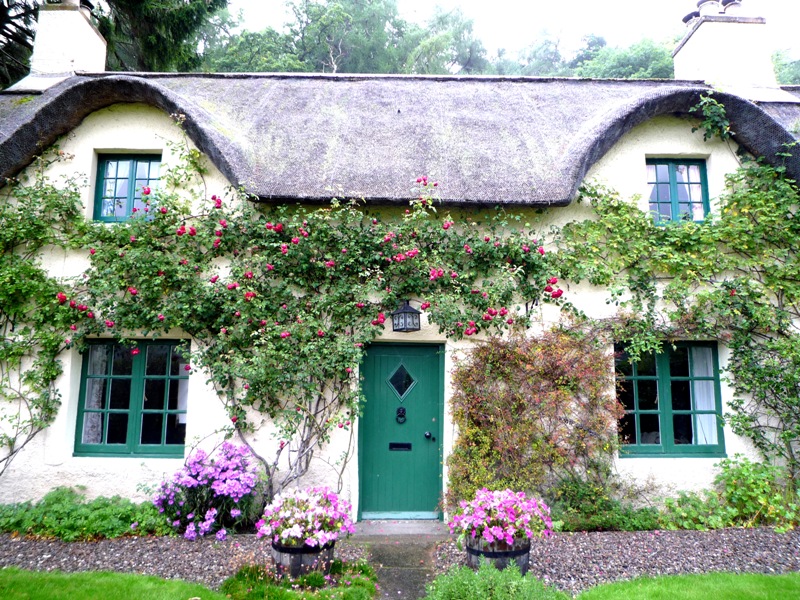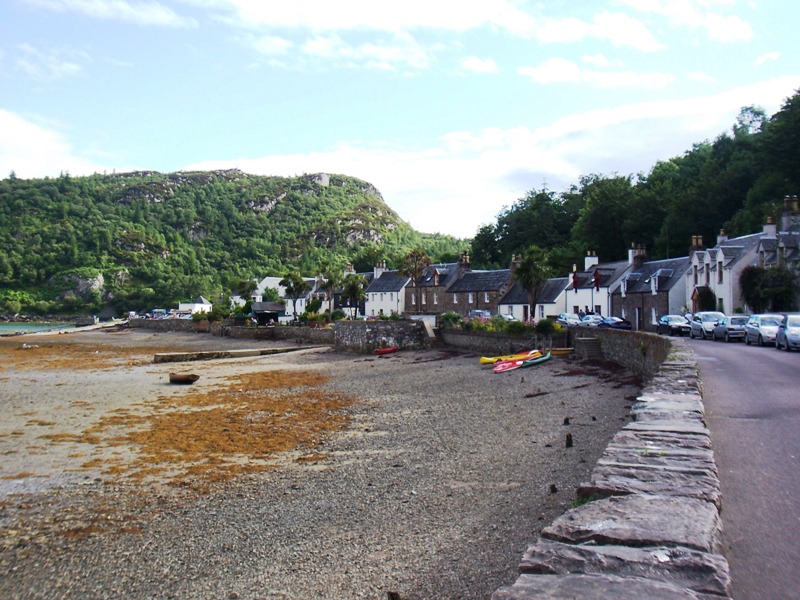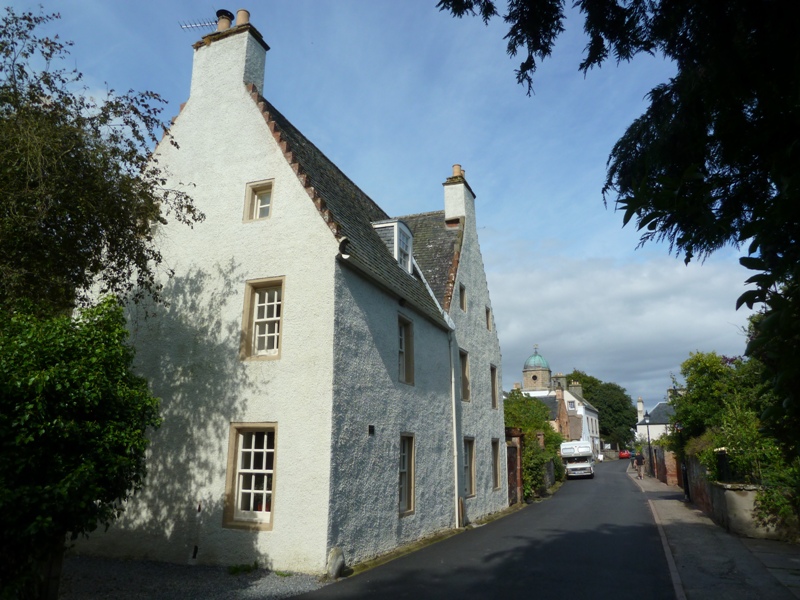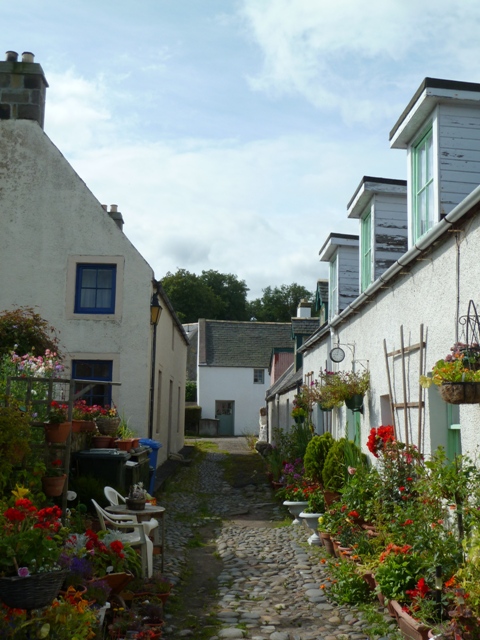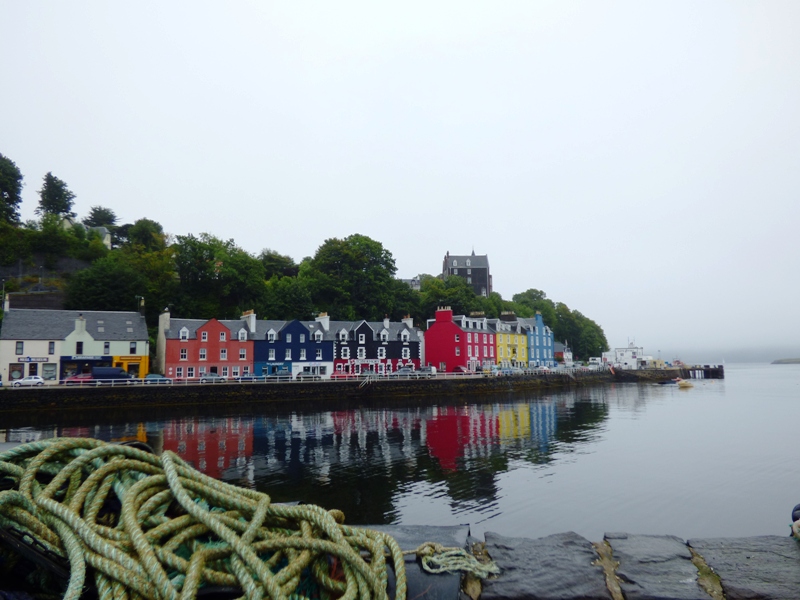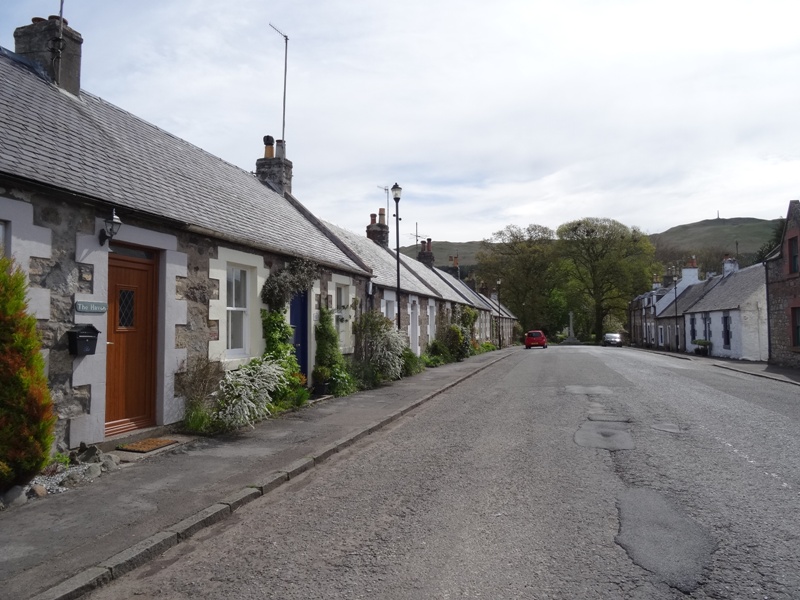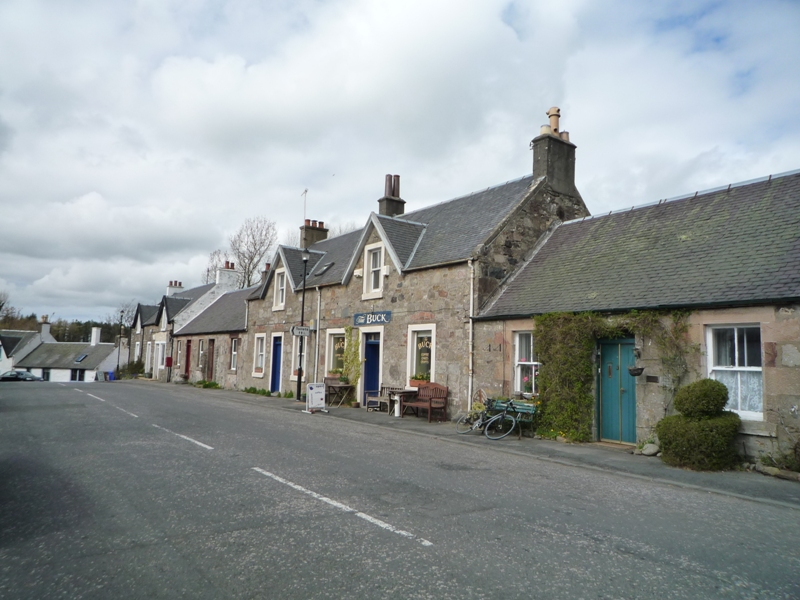Scotland Travel Blog April 2018
"Scotland's Prettiest Villages"
I’ll start this Blog with a disclaimer because you just know that whenever you create a list of the “best” anything you are going to get people complaining that you didn’t mention their favourites. So my disclaimer is that this list is just our choice of the prettiest villages in Scotland and yes, there are others that deserve a mention, but we probably didn’t mention them here because we simply didn’t have a picture that would do them justice.
To narrow down our list of contenders we decided that the villages couldn’t just be pretty, they also had to have a good pub in them. This is simply because we rate villages by the benchmark of how much we would want to live in them and having a good pub is something that is always on our checklist. Not that we are raging alcoholics, but a good pub always helps to build community spirit… no pun intended.
First on our list is Fortingall, which is also the smallest village in this list. There has been a settlement here for literally thousands of years and there is plenty of evidence of the previous inhabitants as they left behind stone circles, menhirs, cup marked stones and a medieval homestead. The most famous living inhabitant of the village is a gnarled old Yew tree which is estimated to be somewhere between 2000 - 3000 yrs old. In 1769 the tree was measured with a girth of over 56 feet. Unfortunately, Victorian souvenir hunters (the Victorians really weren’t great environmentalists) took away chunks of the tree so its branches are now propped up and it all looks a bit fragile. There is something quite intriguing about a tree that might have once given shelter to Roman soldiers and the setting is complemented by the quaint white walled church that is stands next door to.
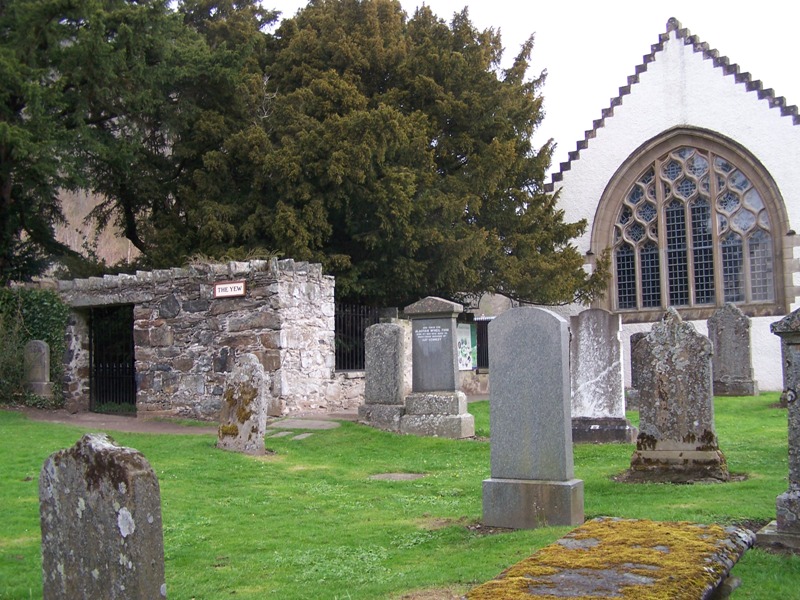
The thing that makes Fortingall really stand out among Scottish villages is its cluster of thatch roofed cottages with beautifully maintained gardens. The phrase “Chocolate Box Cottage” certainly applies to the houses of Fortingall. It is almost too perfect to be real, and there’s a good reason for that. In 1885 the Glen Lyon estate, on which Fortingall stands, was bought by the very wealthy Sir Donald Currie. At that time, the village was a bit of an eyesore so Sir Donald employed a young architect to remodel the village in the fashionable “Arts & Crafts” style. The majority of the houses, including the excellent Fortingall Hotel, were all the result of this architectural exercise and it really is a gem. We guess it wasn’t Sir Donald’s plan, but he helped to create one of the most idyllic settings for a wedding in Scotland. You could get married in the pretty little church, have your wedding photos taken beside the ancient Yew and then retire to the Hotel for your wedding reception. Job done... if you’ve got the money!
Next up is a fairly obvious one, but it often surprises us that so many tourists head to Skye via the bridge and are unaware that a small detour could take them to Plockton, which is arguably the prettiest village in North -West Scotland. Plockton was established as a fishing village in the late 1700’s / early 1800’s by a local landlord. Like most Scottish landlords, his motives were not entirely altruistic as he was simultaneously evicting crofters to make way for sheep farming and then building them houses so they could work for him as herring fishermen. Regardless of his motives, he did pick an outstandingly beautiful spot for his venture and Plockton is a place that you really ought to visit if travelling to Skye.
The waterfront of Plockton is an attractive row of cottages with a couple of hotels, a few gift shops some excellent restaurants and a fringe of palm trees to give it that slightly exotic air. The only downside with Plockton is that it has become such a desirable place to visit that a large percentage of the houses have been bought out by wealthy folk from “down south” and the local people have been priced out of the market. On one visit to Plockton, I was waiting outside a telephone box and overheard some very posh “settlers” calling their friends to tell them that they “loved the village” and “looked forward to colonizing it”. Ach well… nowhere’s perfect.
If Plockton is the prettiest village in north west coast Scotland, then Cromarty might claim to being the prettiest village in the North East. I’m sure the residents of Pennan and Gardenstown would argue about this, but we’ve been in these villages on stormy winter days when the seas were threatening to wash the villages away. Cromarty village has conservation status and is a fine example of an 18th century burgh. A modern day visitor might find it hard to credit, but the sleepy harbour of Cromarty was once an important port servicing local industries that manufactured rope, linen, iron and beer. As a result, the village has some grand Georgian mansions that would have been home to its wealthy businessmen. But the real charm of Cromarty is to be found in the narrow side lanes lined with quirky little cottages. If you are interested, you can learn more about Cromarty in our Blog from August 2011.
Staying on the East coast, but heading south, you are spoilt for choice in the East Neuk of Fife where almost all the coastal villages are worthy of mention. This is a region that enjoyed prosperous trade with the low countries and this exposure to foreign cultures has had some influence on the architectural style of the houses here. A distinctive feature that is common to most of the buildings is their red tile roofs. This tradition started as the tiles were brought across to Fife as ballast in the ships that then sailed home carrying cargoes of Scottish fish, wool and linen. Picking a single village out as the prettiest is a hard choice, but Crail has the most photogenic harbour and its rambling network of narrow lanes that lead to and from the harbour are full of photo opportunities at every turn. The harbour isn’t just for show and a few small commercial fishing pots still operate from here. Indeed, there is a small shop down beside the harbour where you can buy fresh crab and lobster sandwiches. If you prefer, you can also pick a live lobster from their tank to take home to cook, but you might feel more inclined to set it free in the harbour. I’m sure the fishmonger wouldn’t mind so long as you pay him first.
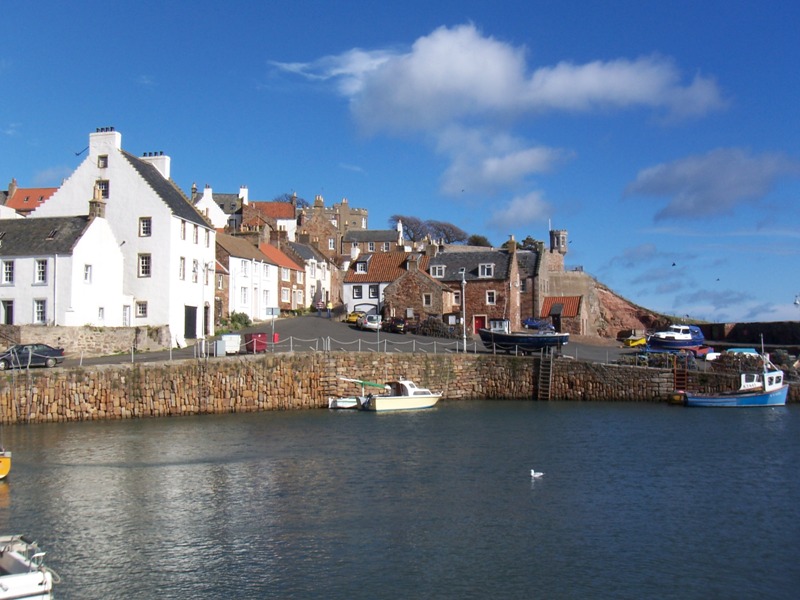
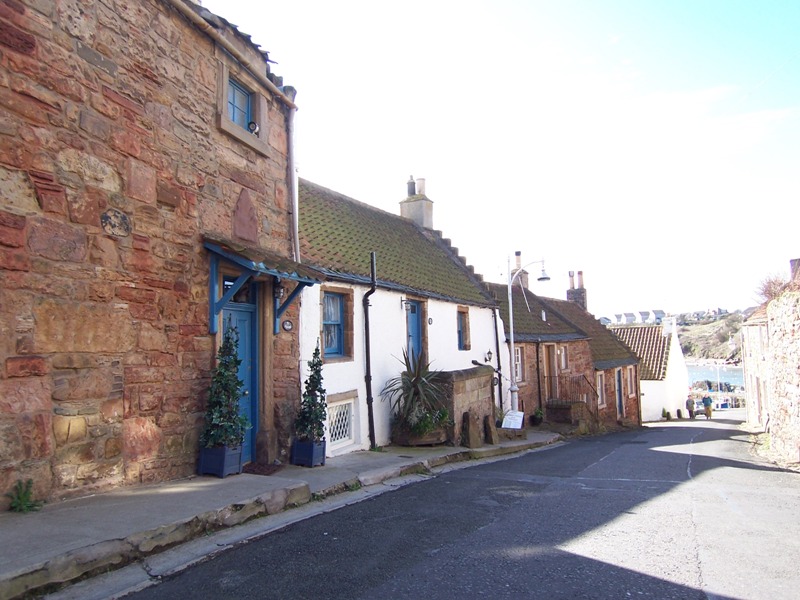
No list of Scotland’s prettiest villages would be complete without a mention of Tobermory. This brightly coloured waterfront of houses huddled around a sheltered harbour has graced many a postcard and calendar. The colourful facades are actually a relatively new feature which started in the early 1960’s when the owner of the Mishnish Hotel decided to paint the building yellow. This then prompted his neighbours to go for equally garish shades of red and blue. Over the years, other neighbours have started to brighten up their properties with cheery, but more restrained shades. However, there is a cottage on a back street that is a very eye catching shade of "Irn-Bru" orange.
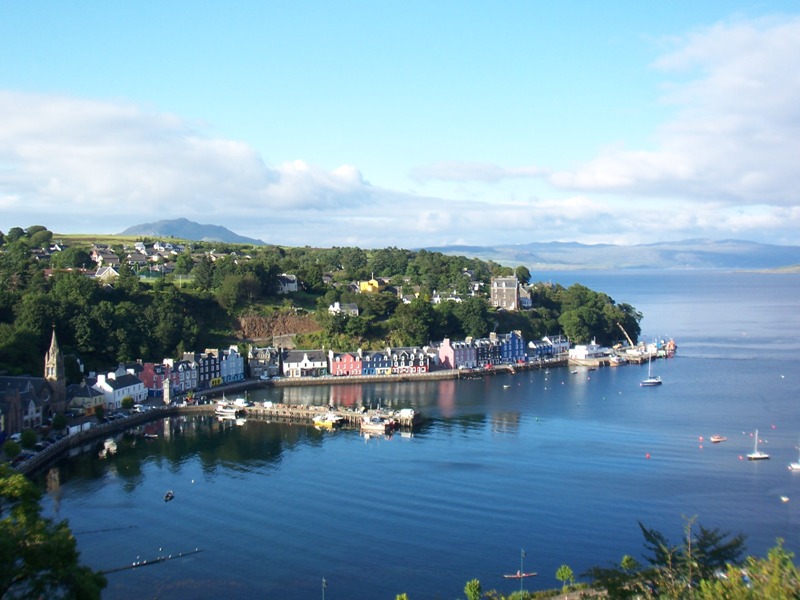
Our final choice is a place that you wouldn’t find if you weren’t already looking for it. Straiton is one of the hidden gems of Ayrshire and sits on the edge of the Galloway Forest Park in south west Scotland. The heart of the village dates from 1760 and consists of two neat rows of cottages. The village has conservation status so there are strict controls on any new developments and this has spared Straiton from some of the unsightly modern housing estates that have blighted so many other charming old villages around Scotland. A terrace of new houses was added some 30 years ago, but they have been sympathetically designed in such a way that the first time visitor would most likely assume them to be some 100 yrs older than they actually are. Although only 30 minutes drive from the busy market town of Ayr, Straiton retains a very rural and isolated feel. In fact, it’s almost like being in the Highlands.

